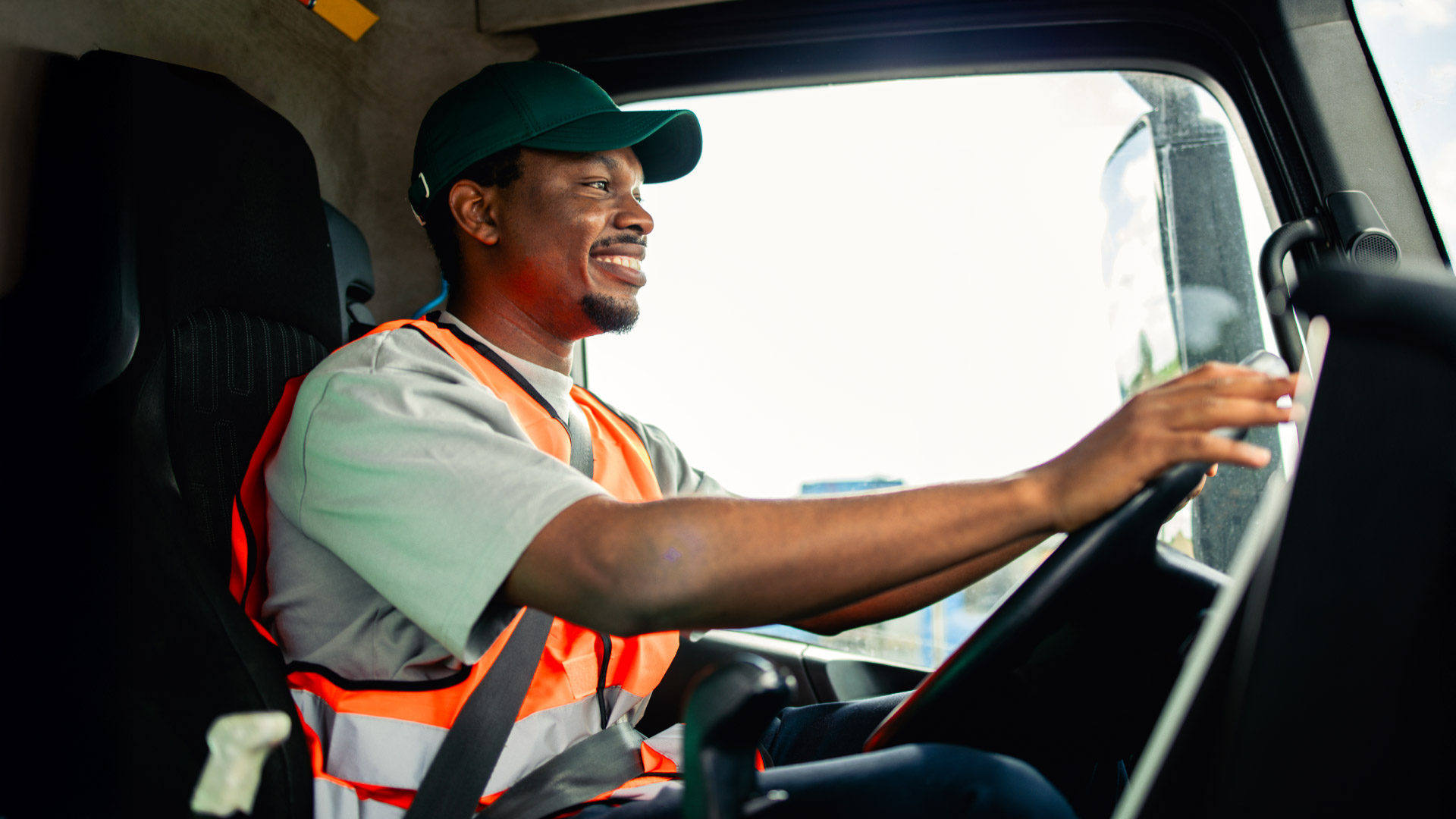A telematics 2020 vision enables you to see clearly
Implementing telematics for your business growth means staying focused on your 5 year business plan and tapping into the potential of the rich data that is available.


Implementing telematics for your business growth means staying focused on your 5 year business plan and tapping into the potential of the rich data that is available, in addition to extending the information to assist in making measured management decisions. This milestone setting refresh will enable you to achieve your 2020 Vision.
Telematics adapts to your business, your business doesn’t adapt to telematics.
At an annual meeting of safety and health professionals last summer, a large group of risk managers got together to discuss ways of managing vehicle damage, personal injury, and workplace compensation claims. Whilst the professionals were able to talk about their challenges inside the conference hall, outside the exhibit hall was packed with telematics companies eager to demonstrate GPS tracking and other tools. None of the professional risk managers talked about telematics as a way to solve their claims problems. Most of the telematics companies were pitching telematics as THE solution. As such, the two groups were talking past each other.
Safety is a CULTURE, telematics is NOT a culture.
Most telematics companies don’t understand this. Telematics is not nirvana, telematics is not the answer to business problems. To illustrate this point, a company needs to have a culture of safety in every aspect of what it does including behind the wheel driving. That means having a documented Driver Policy. The most basic being 'have a clean driver record without deductions'. Beyond having a policy, management now needs to reinforce the policy with annual checks. For businesses with a target to reduce claims expense (commercially insured or self-insured), can develop driver training programs for coaching purposes on action to take while behind the wheel. Also, not all telematics systems are alike. Geotab technology offers more points of data with optional real time in-vehicle coaching to assist drivers to maintain positive performance. To support your 2020 Vision, businesses can share the driver event summaries with a driver training program software provider who can then provide targeted, driver habit specific training.
Efficiency is an EVOLUTION, telematics is the persistent, measurement tool.
Managing efficiency is about managing the opportunity of time. The only way to manage efficiency is measure time granularly, accurate to the second. Realize there is no static answer to your efficiency. Efficiency evolves with things within your control and also things out of your control. Your efficiency milestones in 2005 are not the same in 2015 and won’t be the same in 2025. Some examples are the impact of the internet, cloud computing, traffic patterns, outsourced just in time warehousing means that a business must revisit the concepts of efficiency routinely.
Ten years ago, the majority of telematics software users had a primary need for GPS location of vehicles on a map for dispatching. Today, if a business hasn’t evolved from track and trace, it has not evolved. A simple way to start your evolution is by looking at the first trip and last trip of every vehicle. This measurement examines:
1) The domiciled location of your vehicles in relation to where they are being purposed for business.
2) The productive start time (the time of the day when the vehicle is in front of its profit enabling location).
3) The productive end time (the time of the last profit enabling stop) and examine the impact of traffic congestion, office / warehouse visits and the domiciled location.
Managing a fleet is all about managing the health and cost efficiency of the field force.
Consider a vehicle that is working reliably (healthy battery, optimum fuel economy, clean engine diagnostics) enables predictability in efficiency. More than that, managing fleet enables the identification of the best policies of procurement of vehicles. For sales vehicles, it means managing allowance costs of personal use. Ultimately right sizing the fleet in terms of best maintenance practices for reliability. That’s right, I mentioned sales vehicles. With telematics at the present level of cost effectiveness, businesses need the complete picture of how it is functioning in the field. For any one customer a business might have, there may be sales, delivery and possibly technical resources each having vehicles to serve a purpose. The fleet budget often carries the capital or operating expenses relating to telematics while the entire operation will benefit from the data collected. Think of your entire business to get the big 2020 Vision. To see your business clearly and plan for the future you need to connect with all vehicles and not simply the traditional dispatch, delivery or tech support equipment.
Make an information connection.
New graphic tools to visualize your data, benchmark your data, develop trendlines helps to identify outliers that can be managed. But that’s NOT the 2020 Vision. Data visualization is part of a business process circle: Measure, Identify, Manage for Improvement. Your evolving business will have you revisit what you identify and how you manage based on your goals and priorities. Many Geotab implementation partners offer value-added services to ensure you have the appropriate measurement tools. Beyond this, you need to EXTEND the information to other software systems. Geotab believes that our customers should have full access to the data that is collected. The Geotab Software Development tools are unparalleled and they are free. Our open approach has enabled an ecosystem of Solution Partners to develop Add-In functionality to help businesses connect the information collected from the field to be shared with route scheduling and planning providers, driver training software tutorials, fuel cards, accounting, payroll, CRM systems and other value added business needs. To rethink how you extend the value of telematics throughout your business, start by listing all of the software programs you presently use in your business then share that list with us here (solutionpartners@geotab.com) and we’ll respond with a software synergy roadmap to help you achieve your goals.
Growing together.
You selected your Geotab implementation partner to help you get started in telematics. The value of telematics is achieved over time and by revisiting your goals and applying new thinking to problem solving based on information. Our implementation partners that represent Geotab technology invest in internal training to keep up on the latest solutions that our developers bring to production. We want to make our customers keep evolving and current as well. Throughout the year, we provide training sessions, industry roundtables, data benchmark opportunities that our customers can participate in.
Subscribe below by completing a brief introduction for us to get to know you and we’ll ensure you are included in our updates throughout your telematics evolution.
Even if you are not a Geotab client today, we invite you to also complete the following invitation for a professional consultation of your telematics data (no matter which telematics company you may be using now). At no cost, we will review the data against other safety, fleet and productivity metrics. You will be entered into a draw to join us at our 2015 Geotab Connect Conference to engage in roundtable sessions with fleet managers and professionals.
Subscribe to get industry tips and insights

Colin Sutherland brings to Geotab over 25 years in senior sales and marketing leadership.
Table of Contents
- Telematics adapts to your business, your business doesn’t adapt to telematics.
- Safety is a CULTURE, telematics is NOT a culture.
- Efficiency is an EVOLUTION, telematics is the persistent, measurement tool.
- Managing a fleet is all about managing the health and cost efficiency of the field force.
- Make an information connection.
- Growing together.
Subscribe to get industry tips and insights
Related posts

What is government fleet management software and how is it used?
April 10, 2025
3 minute read


Geotab Data Connector gets an upgrade for better fleet insights
February 24, 2025
1 minute read

Driver incentive programs to improve safety, retention and fleet efficiency
February 7, 2025
4 minute read
.jpg)
School bus fleet management 101: A comprehensive guide
February 5, 2025
4 minute read
